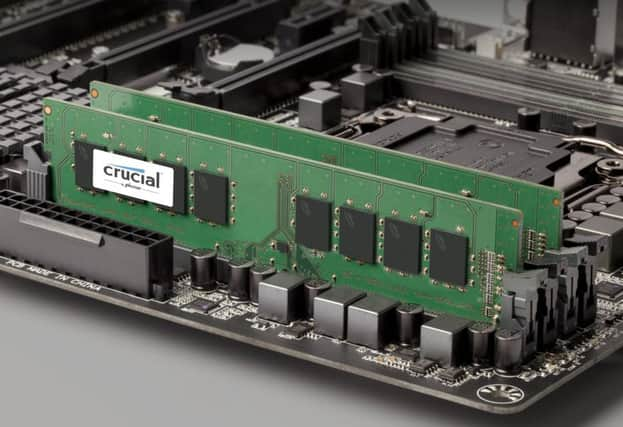How to extend the life by your PC by two years for £20


Adding memory isn’t necessarily a cure-all for a once-speedy PC that is now struggling to accomplish even the simplest tasks. But it can extend the useful life of a machine by another couple of years – so is worth a try.
The physical process of upgrading a desktop PC in this way couldn’t be easier: the side panel is held in place with just a couple of Philips screws or a thumbwheel and once lifted clear, the cavernous interior with the main circuit board on the rear side is laid bare. Most off-the-shelf models have two memory slots – they are the long, thin sockets in the centre of the board that run parallel with each other – and one will be empty. You simply pop your new memory chip into that, close the lid and switch on. The computer will recognise the upgrade without any configuration necessary.
Advertisement
Hide AdAdvertisement
Hide AdBut before you get that far, you will need to have done a little research on which of the hundreds of memory chips out there is the right one for your machine.
The first thing to check is whether you do indeed have a spare socket. Memory chips are sometimes sold in matched pairs – a two-gigabyte chip in each slot would, for instance, constitute 4GB of memory – and if that’s the case with yours, you will need to increase both to a matched pair of a higher value. Some mainboards are capable, theoretically, of taking unmatched pairs, but it’s a path best avoided.
Once you know how many chips you’re looking for, you can visit one of several configurator websites to work out which memory you need. www.crucial.com or www.mrmemory.co.uk will let you input the model number of your PC and return a list of recommended modules. You can order on the spot, but it’s cheaper to buy the memory direct from an online PC shop – so write down the specification carefully and compare them with other prices you find.
The details you are looking for are the physical size of the chip, its core technology and its speed. Voltage and data integrity will also be listed and you should check for a match against each category.
Advertisement
Hide AdAdvertisement
Hide AdA typical configuration is 240-pin DIMM (size); DDR3 (technology); PC3-12800 1600MHz (speed); 1.5 (voltage); and non-ECC (conformity) – which sounds impossibly technical for something that is now a mainstream consumer product, but is not hard to get your head around. DIMM stands for dual inline memory module and describes a common physical chip design; older PCs might use SIMMs. Likewise, DDR2, DDR3 or DDR4 describes the generation of technology on which your mainboard was designed. The speed at which the memory transfers information is expressed by category and data rate, and the voltage and conformity should take care of themselves once the other boxes are ticked.
The result you get from your configurator website will contain all of these details, so if you want to shop around for the best price, it’s really just a case of working down the list and matching each line.
But it’s worth it, because if you get it right, you can double the memory on an average PC, from four to eight gigabytes, for just over £20, and you’ll notice an immediate difference in performance. No other hardware is remotely as affordable.